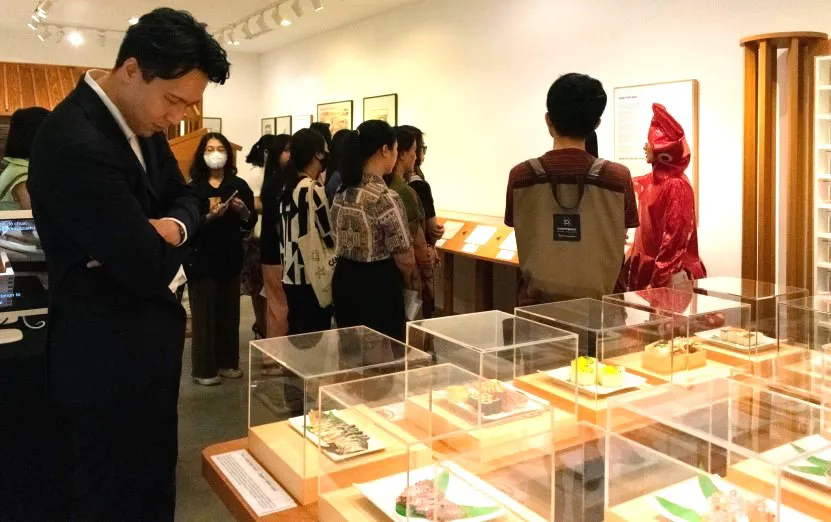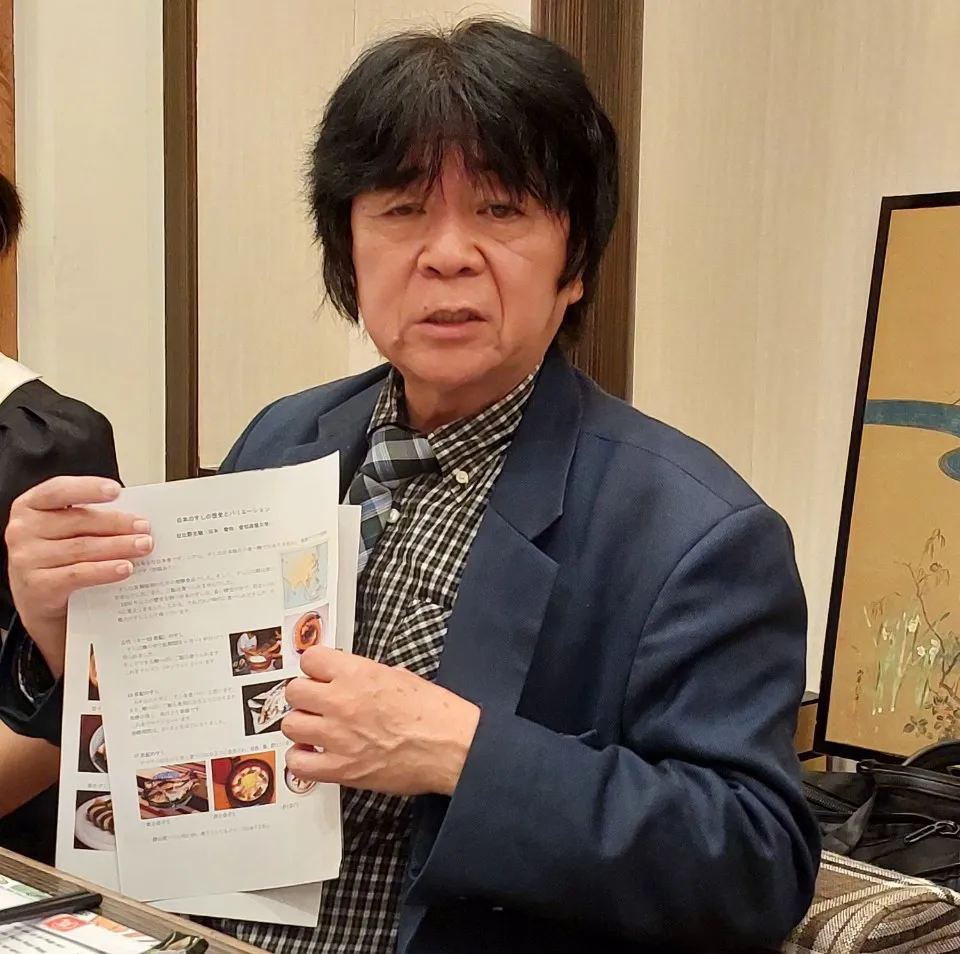Similarities between Japanese and Vietnamese cuisine
Professor Hibino Terutoshi, a sushi expert, said Vietnamese cuisine has many similarities with the traditional art of making sushi in Japan.
The I Love Sushi exhibition at the Japan Foundation Center for Cultural Exchange in Vietnam, Hanoi, unravels many mysteries about the history of Japanese sushi, the most surprising of which is that Japan is not the birthplace of the dish. Over time, the Japanese developed different forms of sushi, and this dish gradually became a characteristic of Japanese cuisine.
Professor Hibino Terutoshi, sushi expert and curator of the exhibition, is in Hanoi to introduce sushi to the public. On this occasion, he spoke to The Hanoi Times about the similarities between Vietnamese and Japanese cuisine.
Milestones in sushi history
| Visitors to the "I Love Sushi" exhibition. Photo: Ngo Minh/The Hanoi Times |
Could you give us a brief history of sushi?
The most popular way to make sushi today is to hold the rice and fish by hand, but few people know that the original purpose of sushi was to preserve fish for a long time.
From the 8th to 12th centuries, sushi was made in wooden barrels and fermented for a long time (from three months to one year). Rice mixed with fish has a sour taste when fermented. This type is called nare-zushi (hon-nare).
By the 15th century, people wanted to shorten the cooking time for sushi so they could eat it sooner. During this period, fermented rice can also be eaten. This dish is called nama-nare, with a fermentation time of one to three months.
In the 17th century, nama-nare was improved so that it could be eaten even earlier. People started mixing nama-nare with liquor, koji mold, or vinegar.
In the 18th century, sushi was made from rice and fish. The vinegar is mixed with the rice from the beginning, not fermented. This dish is called haya-zushi. Since then, many types of sushi have been created.
| Traditional sushi is made with rice and fermented fish. Photo: Ngo Minh/The Hanoi Times |
How has modern life and cultural integration changed traditional sushi?
Conveyor belt sushi or rotation sushi (Kaiten zushi), is a sushi restaurant model born in Japan in 1958 and is currently developing around the world including Vietnam. There are more and more conveyor belt sushi restaurants popping up, but there are fewer people making sushi, the reason being that people make sushi by machine very quickly.
I would like to share with you an interesting memory of when I had the opportunity to go to a restaurant in Canada to eat conveyor belt sushi and learned that the chef who made the sushi there was Vietnamese. I noticed that Vietnamese people also love to eat sushi, which is popular in Vietnam today.
There is a similarity between Vietnam and Japan: the artisans of traditional cuisine are dwindling because it takes so long to learn the craft that not everyone has the patience to continue.
Since sushi is a dish that represents Japanese culinary culture, what is so special about the way sushi is eaten?
Some people believe that nigiri-zushi should be eaten with the hands, not with chopsticks and that knowledgeable people do not dip the rice, but dip the neta (fish or other toppings) in soy sauce. But in reality, when nigiri-zushi was invented, the fish was already seasoned, so there was no need for soy sauce for dipping.
Eating with your hands or with chopsticks depends on where you are eating. Some people say you should eat with your hands if you are sitting at a counter, but you should eat with chopsticks if you are sitting on a tatami mat.
But it's no different in regular sushi shops. I think sushi is just a dish, and it doesn't matter about conventions, it doesn't have to be this way or that way, you can feel free to enjoy it.
| Professor Hibino Terutoshi, a sushi expert, presents the history of sushi at a meeting with journalists. Photo: Ngo Minh/The Hanoi Times |
The origins of sushi
Sushi is Japanese cuisine, but it is not a dish that originated in Japan. Could you elaborate on this point?
During my many years of research into sushi, I came across some documents in China that said that Japan was not the birthplace of this dish. Sushi probably originated in Southeast Asia, specifically the Mekong Delta, and then came to Japan.
This is one of the reasons why I travel to many Southeast Asian countries, including Vietnam. In that country, I saw a dish that seemed very close to ancient sushi: prahok beef sauce of the Khmer people in the south, and rice wine in the southern province of An Giang. These are also dishes in which rice and fish are fermented. However, many researchers believe this is a Khmer dish, so it may have originated in Cambodia.
What did you learn about Vietnamese cuisine on this trip?
During this visit to Vietnam, I discussed the custom of fermenting sour fish with researchers and received information that people in the central province of Quang Nam and the northern province of Tuyen Quang also have the custom of fermenting fish, which is very similar to the way Japanese people make sour fermented fish. I think I will continue to research the origins of sushi in Vietnam.
I also learned that many types of fish and seafood in Vietnamese waters can be used to make sushi. I was very happy to buy the mold that Vietnamese people often use to shape sticky rice. I will bring it back to Japan to make compressed sushi similar to the 19th century Hako-zushi.
Thanks for your time.














